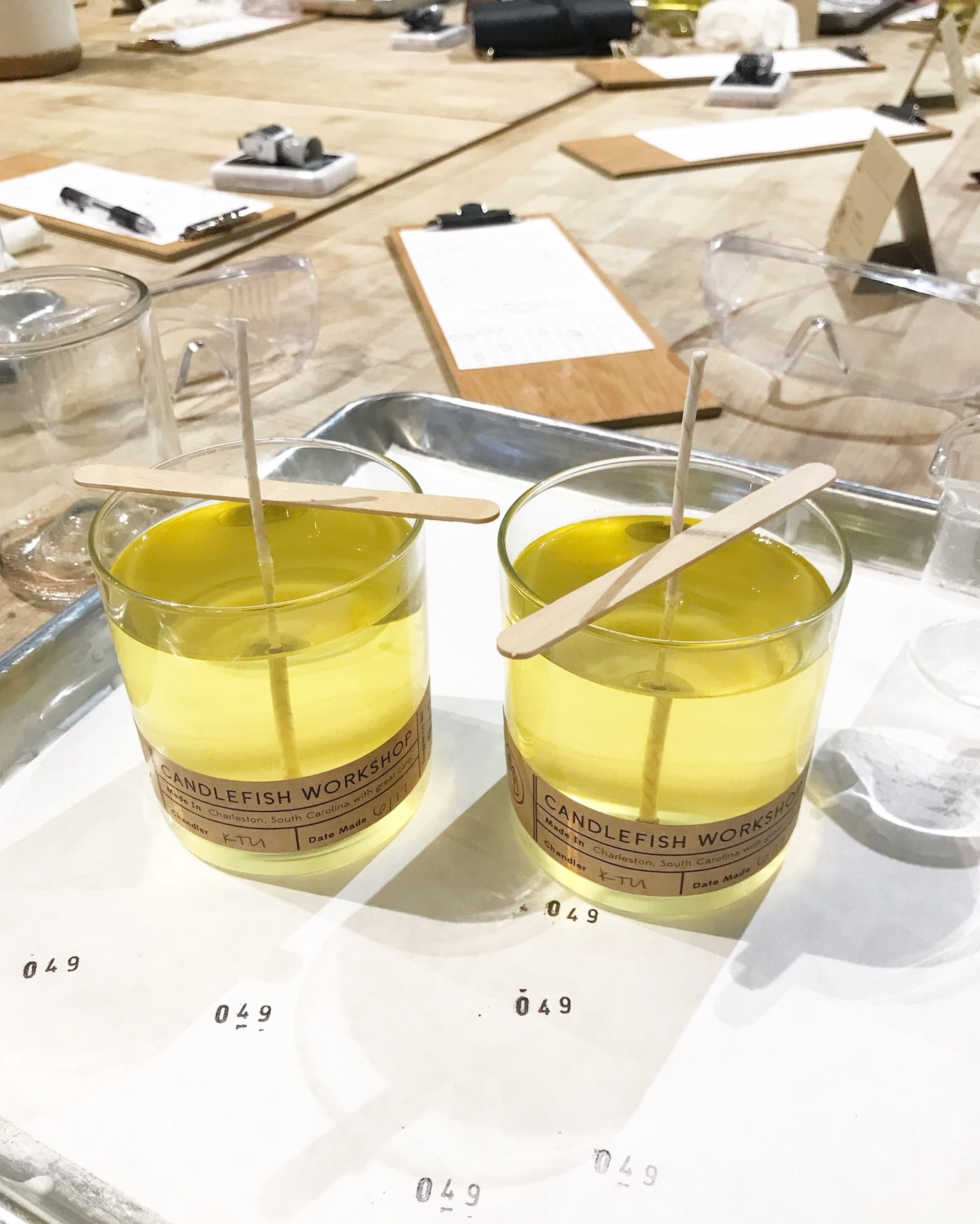Candle making has become a popular hobby and even a lucrative business for many individuals. As aspiring candle makers dive into this craft, they quickly realize the importance of understanding various technical aspects to produce safe and high-quality candles. One such crucial factor is the flashpoint. In this article, we will explore what flashpoint means in candle making and why it holds such significance.
Flashpoint refers to the temperature at which a combustible material, such as a fragrance oil or wax, emits vapors that can ignite when exposed to an open flame or spark. In candle making, having knowledge of the flashpoint is essential as it directly affects both safety and performance. This makes it necessary for beginners and experienced candle makers alike to delve deeper into this concept.
Understanding flashpoint goes beyond mere technical knowledge; it plays a vital role in ensuring candle safety. A low flashpoint implies a higher risk of fires or explosions during the manufacturing process or when burning the candle itself. On the other hand, too high of a flashpoint may hinder fragrance release, leading to dissatisfaction among customers who crave a stronger scent throw. Finding the right balance between safety and performance is key when mastering the art of candle making.
In the following sections, we will navigate through different aspects related to flashpoints in candle making. We will delve into factors that affect flashpoints, methods for determining them accurately, tips for achieving optimal scent throw while maintaining safety, understanding safety implications associated with low flashpoints, choosing high flashpoint ingredients, common mistakes to avoid in managing flashpoints, and more.
By gaining comprehensive knowledge about flashpoints in candle making, you can ensure successful and safe creations that captivate customers while prioritizing their well-being.
What is Flashpoint and Why is it Important in Candle Making?
Explaining the basic concept of flashpoint
In the world of candle making, understanding the concept of flashpoint is essential for ensuring both the quality and safety of your candles. Flashpoint refers to the temperature at which a substance emits enough vapors to ignite when exposed to an open flame or spark. Essentially, it is the temperature at which a substance becomes flammable. For candle makers, knowing the flashpoint of their materials is crucial in order to create candles that burn safely and effectively.
Highlighting the significance of flashpoint in ensuring candle safety
The importance of flashpoint in candle making cannot be overstated when it comes to safety. Using materials with low flashpoints significantly increases the risk of accidents such as flash fires or explosions. As a responsible candle maker, it is crucial to prioritize safety by using ingredients that have appropriate flashpoints for candles.
Not only does working with higher flashpoint ingredients minimize safety risks during manufacturing and burning, but it also helps ensure a longer shelf life for your candles. When using materials with low flashpoints, there is an increased likelihood that they will evaporate quickly or even degrade over time, resulting in a decreased performance and potentially shortened burn time for your candles.
By using ingredients with higher flashpoints, you can create candles that not only burn safely but also maintain their quality over time.
Overall, understanding what flashpoint means in candle making is fundamental for creating safe and long-lasting candles. With this knowledge, candle makers can make informed decisions about the materials they use and take necessary precautions throughout their candle-making process.
Factors Affecting Flashpoint in Candle Making
When it comes to candle making, understanding the concept of flashpoint is essential for ensuring the safety of your candles. The flashpoint refers to the minimum temperature at which a substance can ignite and produce a flame when exposed to an open flame or heat source. In candle making, it is crucial to take into account various factors that can affect the flashpoint of your candles.
One of the key variables that influence flashpoint in candle making is the use of fragrance oils. Different fragrance oils have different flashpoints, which can range from low to high levels. It is important to choose fragrance oils with flashpoints appropriate for candle making to ensure safety. When selecting fragrance oils, be sure to check their flashpoints and choose ones that are suitable for your intended use.
Another factor that affects flashpoint in candle making is the type of wax used. Different waxes have different flashpoints due to their chemical composition and melting points. For example, soy wax generally has a lower flashpoint compared to other waxes like beeswax or paraffin wax. Be sure to consider the properties and characteristics of different waxes when determining their suitability for specific candle projects.
Aside from fragrance oils and waxes, other components used in candle making can also impact the flashpoint. Additives such as colorants or dyes may have their own flashpoints and can potentially contribute to overall safety concerns if not considered carefully. It is important to thoroughly research and understand how each ingredient you use affects the overall flashpoint of your candles.
By taking these factors into account, you can ensure that you are creating candles with a safe and appropriate flashpoint level. Understanding how fragrance oils, waxes, and other components influence the flashpoint will enable you to make informed choices about what materials to use in your candle-making process.
How to Determine the Flashpoint of Candle Wax
Determining the flashpoint of candle wax is a crucial step in ensuring safety and quality in candle making. The flashpoint is the temperature at which the wax releases enough vapors to ignite when exposed to an open flame or spark. It is essential to know the flashpoint of your candle wax to prevent potential hazards such as fire outbreaks or explosions during the burning process.
Step-by-step guide on testing and determining the flashpoint
- Gather the necessary equipment: To determine the flashpoint of your candle wax, you will need a heat source, a test container with a lid, a thermometer, and a reliable source of ignition such as a lighter or matchstick.
- Prepare the sample: Take a small amount of your candle wax and place it into the test container. Ensure that you have enough space in the container for expansion as the wax melts.
- Heat up the sample: Set up your heat source and place it under or next to the test container. Gradually increase the temperature while monitoring it with the thermometer.
- Observe for vapor release: As you heat up the sample, keep an eye out for any signs of vapor release from the wax. These vapors may be visible as smoke or detectable through their odor.
- Perform ignition testing (optional): If you want to confirm whether there are enough vapors for ignition, carefully bring an ignition source near the opening of the container without contacting it directly. If there are enough vapors present, you will see them ignite momentarily.
- Record the temperature: Once you observe vapor release or ignition, note down the temperature at which these events occurred. This recorded temperature is considered to be your candle wax’s flashpoint.
Recommendations for reliable methods and tools
While determining flashpoints through this method can provide useful insights into safety precautions during candle making, it is important to note that it is only a preliminary guide. For accurate and precise flashpoint measurements, it is recommended to use specialized equipment such as a flash point tester.
Flash point testers are designed specifically to measure the flashpoints of various substances, including candle wax. These devices provide more reliable and consistent results by following standardized testing procedures. They offer enhanced safety features, making them suitable for professional candle makers or those handling large quantities of wax.
By investing in a flash point tester, you can have peace of mind knowing that your flashpoint measurements are accurate. It allows you to ensure that your candles meet safety standards and provide a quality product to your customers. However, if you are making candles on a smaller scale or as a hobbyist, using the DIY method outlined above can still help you gain insights into the safety implications of your chosen wax.
Flashpoint vs. Scent Throw
When it comes to candle making, finding the right balance between flashpoint and scent throw is crucial. Flashpoint refers to the temperature at which a substance gives off enough vapor to ignite in the presence of an open flame or spark.
On the other hand, scent throw determines how well a fragrance is dispersed into the surrounding air when the candle is burned. It is important to strike a balance between these two factors to ensure both safety and a pleasing aromatic experience.
Understanding the relationship between flashpoint and scent throw is essential for candle makers. A higher flashpoint generally means that the candle will be safer to use, as there is less risk of it catching fire or causing accidents. However, lower flashpoints often result in better scent throws because more fragrance can be incorporated into the wax. Therefore, candle makers need to carefully consider their priorities when choosing ingredients and testing different combinations.
To achieve optimal scent throw while maintaining safety, there are several tips that candle makers can follow. Firstly, using fragrance oils with higher flashpoints can help strike a better balance. These oils are specifically designed for candle making and are formulated to provide strong scents without compromising safety. Additionally, experimenting with different waxes can also make a difference. Some waxes have higher flashpoints than others, allowing for greater amounts of fragrance oil to be used without exceeding safe levels.
Finding the right balance between flashpoint and scent throw requires some experimentation and testing. Candle makers should always prioritize safety above all else, ensuring that their products meet necessary regulations and standards. By understanding how these factors influence each other and following best practices in ingredient selection and testing methods, candle makers can create candles that not only smell great but also provide peace of mind for consumers.
| Flashpoint vs. Scent Throw: Finding the Right Balance |
|---|
| – Understanding the relationship between flashpoint and scent throw |
| – Tips for achieving optimal scent throw while maintaining safety |
| – Importance of prioritizing safety in candle making |
Understanding the Safety Implications of Flashpoint in Candle Making
When it comes to candle making, understanding the safety implications of flashpoint is crucial for ensuring a successful and safe process. Flashpoint refers to the minimum temperature at which a substance can ignite in the presence of an ignition source such as an open flame. In candle making, it is important to be aware of the flashpoint of various ingredients, including fragrance oils and waxes, as it can greatly affect the safety and performance of the candles.
One of the main safety concerns related to flashpoint in candle making is the potential risk of flash fires or explosions. Materials with low flashpoints are more prone to igniting easily when exposed to heat or flames.
If candles are made using ingredients with low flashpoints, such as essential oils with high amounts of volatile compounds, they may pose a greater risk during burning. This is especially true if proper safety measures like adequate ventilation and fire prevention guidelines are not followed.
To ensure candle safety, it is important for candle makers to use ingredients with higher flashpoints. Using waxes that have a higher flashpoint reduces the likelihood of accidents occurring during production and use. In addition, selecting fragrance oils specifically designed for candle making that have been tested for their flashpoints can also contribute to safer candles.
| Type of Wax | Flashpoint (°C) |
|---|---|
| Soy Wax | ≈70-80°C |
| Paraffin Wax | ≈185-250°C |
| Beeswax | ≈204°C |
| Coconut Wax | ≈200-220°C |
By using ingredients with higher flashpoints, candle makers can greatly reduce the risk of accidents and ensure the safety of their products. It is also important to follow proper testing methods and guidelines to determine the flashpoint of candle wax accurately. In the next section, we will provide a step-by-step guide on how to test and determine the flashpoint of candle wax effectively, as well as recommend reliable methods and tools for this process.
Choosing High Flashpoint Ingredients for Candle Making
When it comes to candle making, choosing the right ingredients is crucial to ensure both the safety and quality of the final product. One key factor to consider is the flashpoint of the ingredients used.
The flashpoint refers to the temperature at which a substance can ignite or produce a flammable vapor when exposed to an open flame or spark. In candle making, using ingredients with a high flashpoint is essential for promoting safety during the manufacturing process and when burning the candles.
For candle making enthusiasts, selecting wax types and fragrance oils with high flashpoints offers several benefits. Firstly, using high flashpoint waxes reduces the risk of potential accidents during production. These waxes have a higher ignition temperature, meaning they are less likely to catch fire while being melted and poured. This helps prevent dangerous situations such as flash fires or explosions in your workspace.
When it comes to fragrance oils, choosing those with high flashpoints ensures that they will not contribute to overheating or combustion issues when added to candles. This is especially important because fragrance oils often contain various chemical compounds that can have different flammability levels. By selecting fragrance oils with higher flashpoints, you can minimize the risk of your candles becoming unsafe or causing accidental fires.
To find out if a specific wax or fragrance oil has a high flashpoint, it’s recommended that you check their technical data sheet from the supplier or conduct testing yourself. The data sheets usually provide information on key attributes including the flashpoint.
If you decide to test it yourself, there are reliable methods available such as using a closed cup tester or a Tag Open Cup tester. These tools allow you to determine accurate flashpoints and make informed decisions regarding ingredient selection.
Common Flashpoint Mistakes to Avoid in Candle Making
When it comes to candle making, understanding and properly managing the flashpoint is crucial for ensuring the safety of your products. Failing to do so can lead to potential hazards such as flash fires or even explosions. To ensure a successful and safe candle-making process, it is essential to be aware of common flashpoint mistakes to avoid.
- Neglecting to test fragrance oils: One common mistake in candle making is not testing the flashpoint of fragrance oils before using them. Different fragrance oils have varying flashpoints, and using those with a low flashpoint can significantly increase the risk of accidents. It is important to always check the flashpoint of each fragrance oil you plan to use and only use those that are suitable for candle making.
- Overheating wax: Another mistake many candle makers make is overheating the wax. When heating wax, exceeding its recommended temperature can result in a lower flashpoint. This means that even if you have used fragrance oils with a high flashpoint, overheated wax can still be dangerous when combined with those oils. Always follow the manufacturer’s instructions and heat your wax carefully within the recommended temperature range.
- Inadequate ventilation: Proper ventilation is often overlooked but plays a crucial role in maintaining safety during candle making. Adequate airflow helps prevent the accumulation of flammable vapors that may arise from heated wax or fragrance oils with low flashpoints. Make sure your workspace has proper ventilation, whether through open windows or an exhaust fan, especially when dealing with materials that have potentially lower flashpoints.
By avoiding these common mistakes, you can reduce the risk of accidents while ensuring your candles are safe for use. Paying attention to testing fragrance oils, carefully heating your wax, and maintaining proper ventilation will greatly contribute to a safer candle-making process overall.
Ultimately, prioritizing safety in every step of candle making is essential for both you as the creator and for those who use your products. Being aware of the common flashpoint mistakes to avoid will help you create high-quality candles that not only smell great but are also safe to burn.
Conclusion
In conclusion, understanding and mastering the concept of flashpoint is crucial for both successful and safe candle making. The flashpoint of a candle refers to the temperature at which its vapor can ignite in the presence of an open flame. It plays a significant role in ensuring the safety of candles and preventing any potential hazards such as flash fires or explosions.
Throughout this article, we have explored various aspects related to flashpoint in candle making. We have discussed the basic concept of flashpoint and why it is important for candle makers to be aware of it. Factors that affect flashpoint, including fragrance oils, waxes, and other components, have also been highlighted.
Determining the flashpoint of candle wax is an essential step in the candle making process. A step-by-step guide has been provided on how to test and determine the flashpoint accurately. Reliable methods and tools have also been recommended to assist candle makers in this regard.
Furthermore, we have delved into the balance between flashpoint and scent throw. While achieving optimal scent throw is desired, maintaining safety should always be a priority. Practical tips have been shared on how to find this balance effectively.
In order to prioritize safety in candle making, choosing high flashpoint ingredients is vital. We have suggested wax types and fragrance oils with high flashpoints and discussed their benefits as well as trade-offs.
To avoid common mistakes leading to unsafe flashpoint levels, it is important to err on the side of caution. We have identified these mistakes while offering practical advice for minimizing risks.
Frequently Asked Questions
What is the best flash point for candles?
The best flash point for candles varies depending on the type of wax being used and the desired characteristics of the candle. Generally, a flash point between 130°F and 150°F is considered ideal for most candle waxes.
This temperature range allows the candle to produce a steady flame while minimizing the risk of overheating or causing potential fire hazards. Flash points significantly below this range may result in candles that burn too quickly or have weak fragrances, while flash points above this range may increase the risk of producing sooty flames or melting issues.
What is flash point for fragrance oil?
The flash point for fragrance oil is particularly important in candle making, as it determines at what temperature the oil will release flammable vapors that can potentially ignite when exposed to an open flame or heat source. Fragrance oils should generally have a flash point above 140°F to ensure safety during burning.
It is crucial to verify and select fragrances with appropriate flash points, as those with lower flash points can pose higher risks of combustion during usage and manufacturing processes.
What is the flash point of soy wax?
The flash point of soy wax typically falls within a range of 135°F to 156°F, depending on its specific formulation and manufacturer specifications. Soy wax is known for its lower melting temperature compared to other types of waxes like paraffin or beeswax.
Having a slightly higher flash point than the typical burning temperature helps provide stability and avoid any potential safety concerns during candle manufacture or use. Using soy wax with an appropriate flash point ensures that candles made from it offer safe and consistent performance throughout their lifespan.

Welcome to my candle making blog! In this blog, I will be sharing my tips and tricks for making candles. I will also be sharing some of my favorite recipes.





